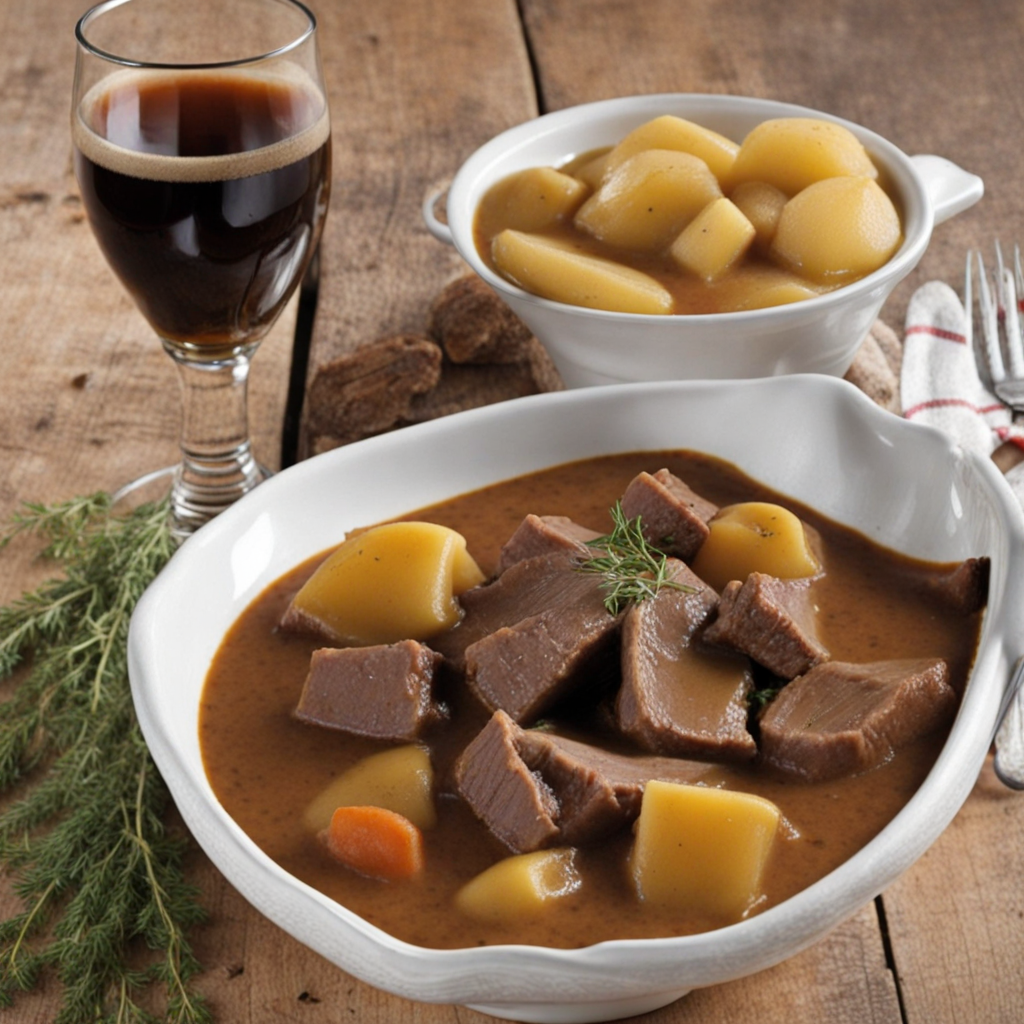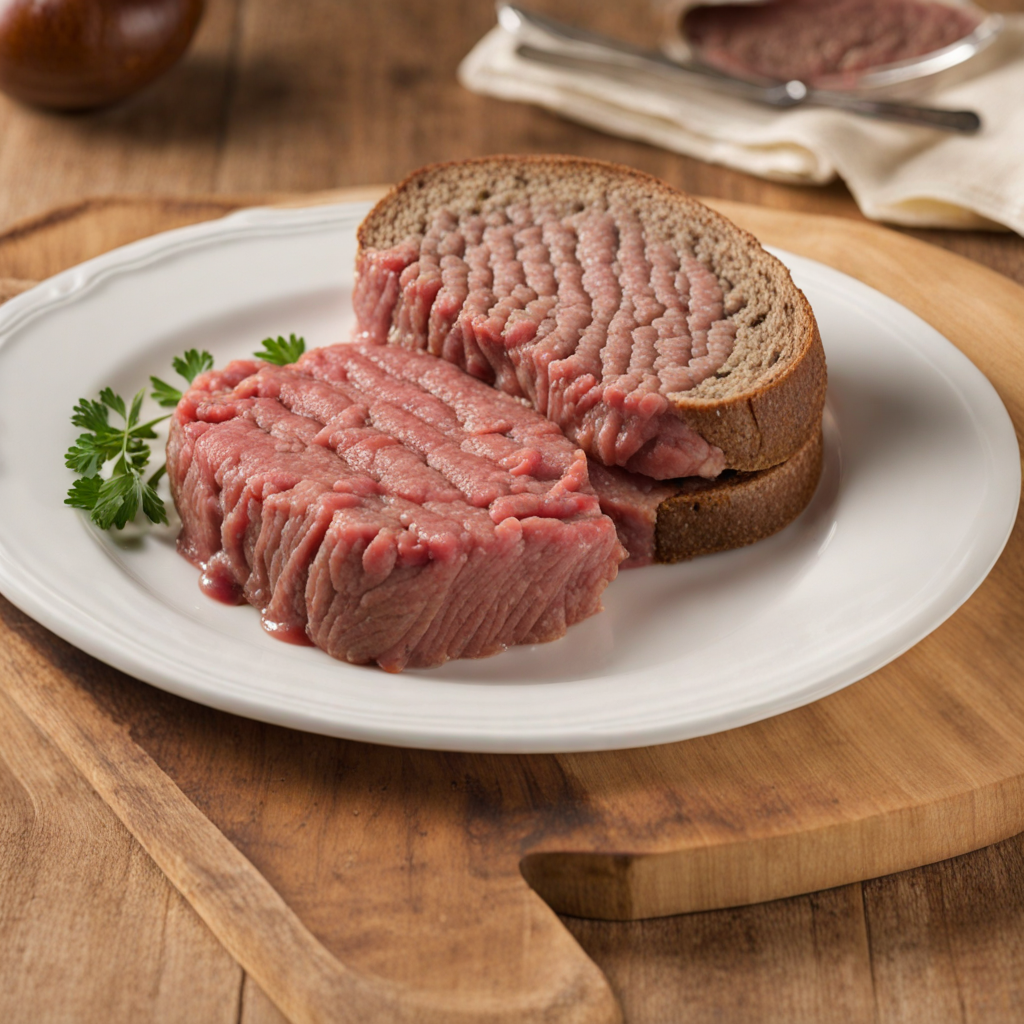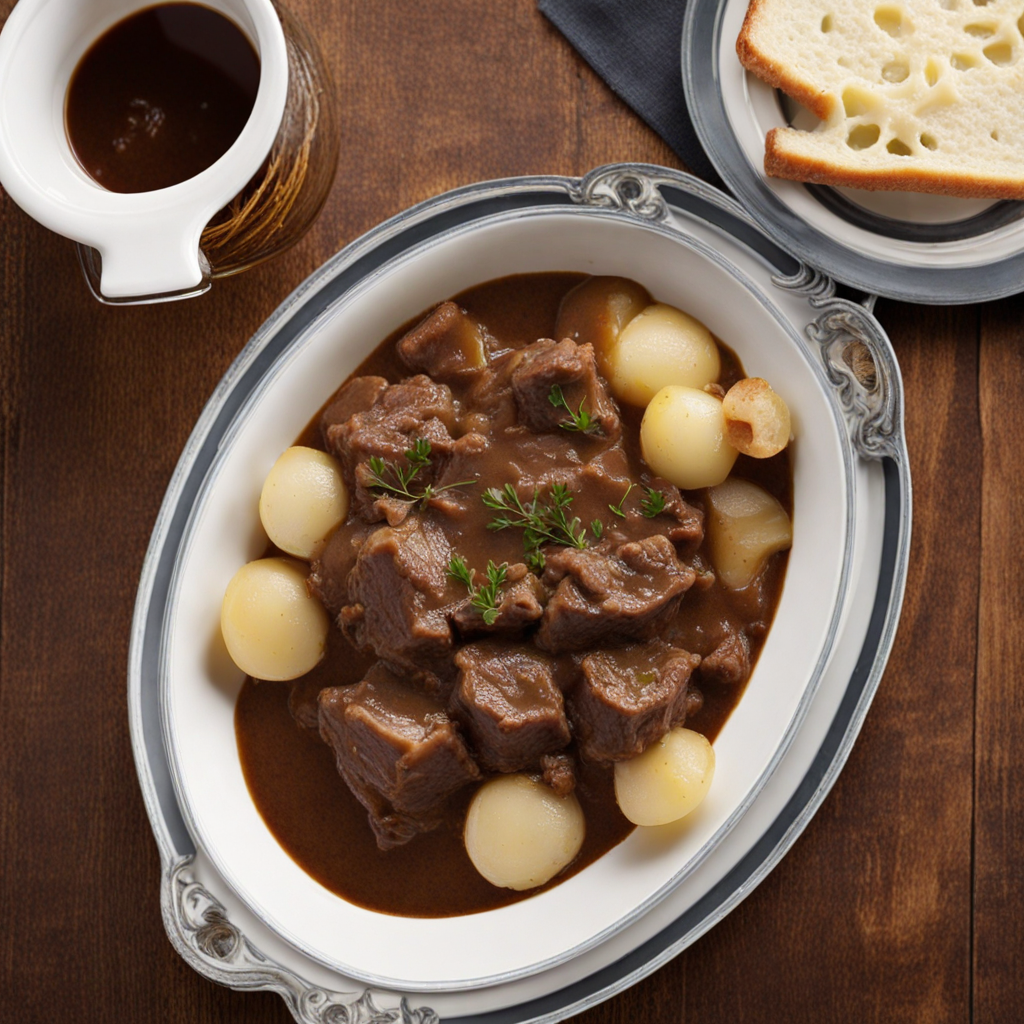Stoofvlees
Stoofvlees, a quintessential dish from Belgium, is a hearty beef stew that embodies the essence of comfort food. This dish is typically made with succulent cuts of beef that are slowly braised to tender perfection, allowing the flavors to meld beautifully over time. The process involves searing the meat to create a rich crust, followed by a slow simmer in a luscious sauce made from a blend of caramelized onions, dark beer, and a hint of mustard. The result is a deep, robust flavor that is both savory and slightly sweet, making every bite a delightful experience for the palate. What sets Stoofvlees apart is its use of Belgian beer, which contributes a unique depth and complexity to the sauce. Traditionally, a rich, dark ale is used, enhancing the dish with malty undertones and a slight bitterness that balances the sweetness of the onions and the richness of the beef. The slow cooking process allows the alcohol to evaporate, leaving behind a beautifully infused broth that envelops the meat. Many recipes also call for spices such as bay leaves and thyme, adding aromatic notes that elevate the overall flavor profile. Served often with a side of crispy fries or creamy mashed potatoes, Stoofvlees is a dish that invites you to savor every moment of the dining experience. The combination of the tender beef, the flavorful sauce, and the accompanying sides creates a comforting and satisfying meal that warms the soul. This dish is not just about nourishment; it is a celebration of Belgian culinary tradition, perfect for cozy gatherings or a family dinner, inviting everyone to indulge in its heartwarming flavors.
How It Became This Dish
The Rich History of Stoofvlees: Belgium's Beloved Beef Stew #### Origins Stoofvlees, also known as "Flemish stew," is a culinary treasure that hails from the heart of Belgium. Its name derives from the Dutch word "stoof," meaning "to stew," and "vlees," meaning "meat." This hearty dish primarily consists of beef, which is slowly braised in a rich, dark beer sauce, often accompanied by onions, bread, and a variety of spices. The roots of Stoofvlees can be traced back to the Middle Ages, when stewing was a common cooking method across Europe. Cooking meat slowly in liquid allowed tougher cuts to become tender and flavorful, making it an ideal method for the less expensive cuts of meat that were available to many households. The use of beer in Stoofvlees is particularly noteworthy. Belgium has a long-standing brewing tradition, with hundreds of breweries producing a wide variety of ales and lagers. The incorporation of beer into recipes is a natural extension of the country's rich brewing heritage. This practice likely began as a way to enhance flavors and tenderize meat, and over centuries, it has become a hallmark of Belgian cuisine. #### Cultural Significance Stoofvlees holds a significant place in Belgian culture, particularly in Flanders, where it is often served as a comforting dish during colder months. It is associated with family gatherings, celebrations, and local festivities, embodying the spirit of Belgian hospitality. Traditionally served with fries (frites) or mashed potatoes, Stoofvlees is a quintessential example of "comfort food," providing warmth and sustenance on chilly days. The stew is also emblematic of the communal aspect of Belgian dining. In many Flemish homes, it is prepared in large quantities, allowing families to share the meal together. Over the years, Stoofvlees has become a symbol of home-cooked meals, representing the time-honored traditions of Belgian culinary practices passed down through generations. Its presence at family tables not only nourishes the body but also strengthens familial bonds, making it a dish laden with nostalgia and memory. #### Development Over Time As Belgium's culinary landscape evolved, so did Stoofvlees. Initially, recipes were quite simple, focusing primarily on the meat, onions, and a basic liquid for stewing. However, as trade routes expanded and cooking techniques became more sophisticated, the recipe began to incorporate a wider array of ingredients and flavors. In the 19th century, as the industrial revolution took hold, more people moved to urban areas, and the availability of ingredients increased. With this change, Stoofvlees began to transition from a rustic home-cooked meal to a dish served in bistros and restaurants. Chefs started to experiment with different types of beer, including dark ales, dubbels, and even tripels, each lending its unique character to the dish. This experimentation not only enriched the flavor profile of Stoofvlees but also helped to solidify its status as a beloved staple of Belgian cuisine. The post-World War II era saw a renewed interest in traditional Belgian dishes, coinciding with a broader movement throughout Europe to celebrate regional culinary heritage. During this time, Stoofvlees gained recognition beyond Belgium's borders, becoming a representative dish of Belgian gastronomy. Food writers and chefs began to showcase the stew in cookbooks and culinary articles, elevating it to a national symbol of pride. #### Modern Interpretations Today, Stoofvlees remains a cherished dish, both at home and in restaurants across Belgium. While the traditional recipe continues to be celebrated, modern interpretations have emerged, reflecting current culinary trends and dietary preferences. Some chefs, for instance, have incorporated local ingredients such as seasonal vegetables or artisanal bread, while others have experimented with alternative meats or plant-based options to accommodate vegetarian diets. Additionally, Stoofvlees has found its way into the world of gourmet cuisine, where chefs have elevated the dish to new heights. Innovations may include the use of high-end craft beers, gourmet cuts of meat, or elaborate plating techniques, all while maintaining the essence of the original recipe. This evolution demonstrates not only the adaptability of Stoofvlees but also its enduring appeal in a rapidly changing culinary landscape. #### A Dish that Unites Despite its evolution, the heart of Stoofvlees remains intact. It is still a dish that invites sharing, conversation, and connection. In Belgium, it is common to find Stoofvlees on menus at various establishments, from cozy family-run taverns to high-end restaurants, each offering its twist on the classic recipe. Belgians take pride in their culinary heritage, and Stoofvlees serves as a reminder of the country's rich history, communal values, and the art of slow cooking. In recent years, the global interest in Belgian cuisine has surged, leading to the international recognition of Stoofvlees as a must-try dish. Food enthusiasts and travelers flock to Belgium not only to savor the famous waffles and chocolate but also to experience the robust flavors of Stoofvlees. This growing interest has sparked a revival of traditional cooking classes and workshops, where locals share their family recipes with a new generation of cooks eager to learn the art of crafting this beloved stew. #### Conclusion Stoofvlees is more than just a dish; it is a cultural artifact that tells the story of Belgium's culinary evolution, reflecting the nation's history, traditions, and values. From its humble origins in medieval kitchens to its status as a cherished comfort food today, Stoofvlees embodies the essence of Belgian hospitality and the joy of shared meals. As it continues to adapt and thrive in contemporary cuisine, this hearty stew remains a quintessential part of Belgium's identity, ensuring that generations to come will savor its rich flavors and the stories it carries.
You may like
Discover local flavors from Belgium







